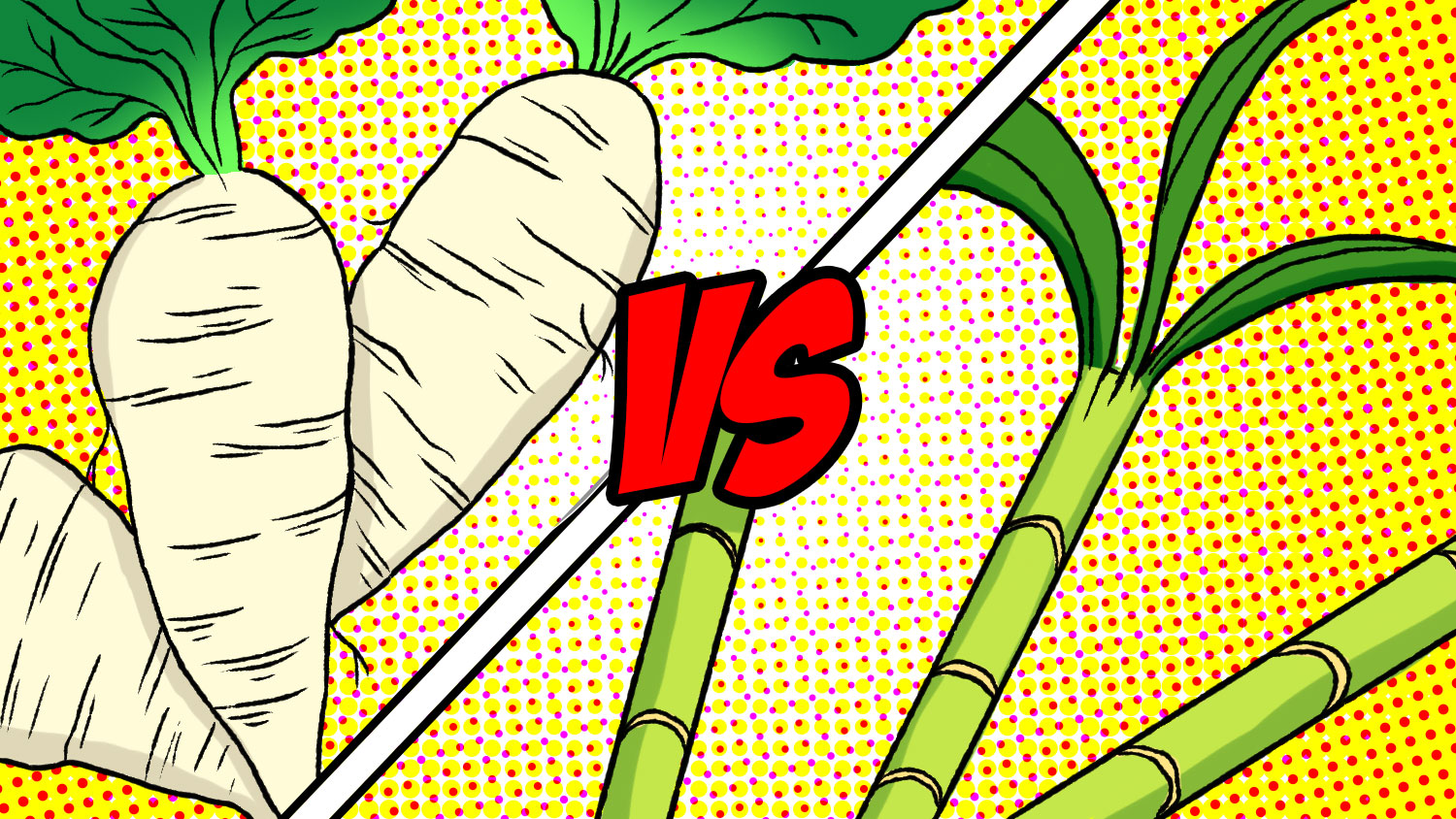Beet Sugar vs Cane: A Guide to Choosing the Best Option for Your Recipes
Beet Sugar vs Cane: A Guide to Choosing the Best Option for Your Recipes
Blog Article
Beet Sugar Vs Cane: Which Sugar Reigns Supreme in Your Kitchen Area?
The choice in between beetroot sugar and cane sugar frequently reflects not just individual preference yet also the culinary demands of certain recipes. Walking stick sugar is frequently applauded for its rich, intricate flavor that improves baked goods, while beetroot sugar supplies a much more neutral sweetness that might fit a range of applications. The distinctions expand past flavor profiles to origins and dietary facets, raising questions concerning their corresponding functions in modern cooking areas. Which sweetener truly deserves a place of honor in your cooking collection? The response may shock you as we discover these nuances even more.
Beginnings of Beetroot Sugar
Beetroot sugar, originated from the sugar beet plant (Beta vulgaris), has an abundant background that dates back to the late 18th century. The initial successful removal of sugar from beetroots happened in Germany around 1747, when drug store Andreas Marggraf recognized the plant's sugar content. By the early 19th century, the procedure was refined and advertised, causing the establishment of beet sugar factories across Europe.
The surge of beet sugar was significantly influenced by geopolitical aspects, particularly the Napoleonic Wars, which disrupted walking stick sugar products from the Caribbean. This triggered European countries to invest in beet sugar manufacturing as a domestic choice. The facility of the sugar beet market supplied an economic increase to backwoods, creating tasks and stimulating agricultural methods.
Origins of Walking Cane Sugar

By the 7th century, sugar cane was presented to the Middle East, mostly due to the development of Islamic realms. The innovation for refining sugar from cane juice advanced during this period, causing the establishment of large-scale sugar manufacturing. The Crusades better facilitated the intro of sugar to Europe, where it ended up being a sought after deluxe product by the 12th century.
The significant need for sugar in Europe caused the facility of vineyards in the Caribbean and South America during the colonial period. This marked a turning factor in sugar production, transitioning from a high-end great to an essential product, basically shaping culinary methods and economic situations worldwide.
Taste Profiles Contrast
While both beetroot sugar and cane sugar offer the same key function as sugar, their taste profiles display subtle distinctions that can influence culinary applications (beet sugar vs cane). Walking cane sugar is typically considered to have a slightly extra complex taste, characterized by a tip of caramel notes that can improve the taste of baked items and confections. This depth is connected to the visibility of trace minerals and organic substances that are extra obvious in cane sugar as a result of its all-natural processing methods
In contrast, beet sugar tends to have a cleaner, extra uncomplicated sweetness with less flavor complexity. It is commonly called having a somewhat metallic aftertaste, which may be less desirable in certain delicate meals or drinks. This difference comes to be especially considerable in dishes where the sugar's flavor could compete with other active ingredients, such as in fruit maintains or great pastries.
Ultimately, the selection between beet sugar and walking cane sugar might boil down to personal preference and the details demands of a recipe. For those seeking a nuanced flavor to match their cooking productions, cane sugar may be the preferred choice, while beet sugar works as a useful and functional choice in many applications.
Nutritional Differences
Nutritionally, both beet sugar and walking stick sugar are almost identical, mainly composed of sucrose and providing the exact same caloric web content. Each type of sugar includes roughly 4 calories per gram, making them equal in energy contribution when utilized in food and beverages - beet sugar vs cane. This similarity reaches their chemical frameworks, which contain sugar and fructose molecules bound with each other
While the primary nutritional value of both sweeteners is basically the same, some small variations exist in trace minerals. Walking stick sugar may include little quantities of potassium, magnesium, and calcium, while beet sugar is often lacking these nutrients. The quantities existing are negligible and do not considerably impact overall dietary intake.
It is essential to note that neither beetroot sugar nor walking stick sugar supplies any considerable health advantages; they are best consumed in small amounts as component of a well balanced diet plan. Excessive consumption of any type of sugar can contribute to wellness concerns such as obesity, diabetic issues, and dental troubles. When taking into consideration dietary differences, the focus needs to stay on small amounts and total dietary patterns instead than the min distinctions in between beet and walking cane sugars.
Cooking and Cooking Makes Use Of
When it involves cooking and baking, both beet sugar and cane sugar can be utilized reciprocally in most dishes due to their look at this website comparable chemical make-up and functional properties. Both sugars are composed largely of sucrose, which means they will certainly give the same level of sweet taste and contribute to the Maillard response, essential for browning and taste development in baked products.
In baking, both beetroot and cane sugars can be made use of in cookies, cakes, and pastries without affecting the structure or structure of the final item. However, there are refined distinctions in taste; some bakers suggest that walking cane sugar supplies a slightly cleaner sweetness, while beetroot sugar might give a more durable flavor.
For cooking applications, both sugars do similarly well in marinades, sauces, and dressings, improving flavors without changing the desired outcome. In addition, they can be utilized in candy-making procedures, where accuracy is essential, as both sugars crystallize similarly.

Final Thought
In recap, both beetroot sugar and investigate this site walking cane sugar have distinct beginnings and flavor profiles that affect their cooking applications. Walking cane sugar's facility, caramel-like notes improve the flavor of baked products, while beetroot sugar provides a clean sweetness ideal for a broad range of meals. Nutritional differences in between both are very little, permitting compatible usage in the majority of recipes. Inevitably, the option between beet and cane sugar relies on the details demands of the dish being prepared.
Cane sugar is regularly applauded for its rich, intricate taste that improves baked items, while beetroot sugar uses an extra neutral sweetness that might fit a range of applications.Beetroot sugar, obtained from the sugar beetroot plant (Beta vulgaris), has an abundant history that dates back to the late 18th century.While both beetroot sugar and walking cane sugar offer the exact same main function as sweeteners, their taste profiles display refined differences that can influence cooking applications.In summary, both beetroot sugar and walking cane sugar have distinctive beginnings and taste accounts that influence their cooking applications. Walking cane sugar's complicated, caramel-like notes Check Out Your URL enhance the flavor of baked products, while beet sugar uses a tidy sweetness appropriate for a broad array of dishes.
Report this page